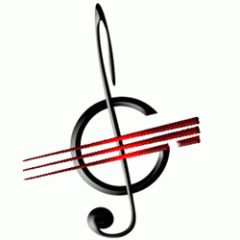Trading fours is not something you should walk up to a person on the street and enquire about.
“Hey. Do you want to trade fours?”
Or they might well reply:
“You’re asking for a bunch of fives!”

But on the jazz bandstand this is a very common technique used to introduce a little variety into a piece.
Once members of the band have finished their improvisation, you would normally return back to playing the actual theme of the song. You call this the “head” or “head arrangement”. But on some occasions players may slot in “trading fours” (or indeed trading twos or eighths) before playing the head to finish the performance.
Now trading fours involves the following: the lead player (saxophonist for example) improvises four bars, then a different player (pianist for example) improvises four bars. The lead player does another four bars and the 2nd player another four, etc.. All of this is done over the form of the piece, so you could do several choruses of fours. The shape of this is in the form of a musical conversation, so the two players usually react musically to the phrases in the four bars the other player has just played. Quite often the lead player in the group will “‘trade” fours with the drummer, as this means the texture of the whole piece changes. This would mean that while the lead player is playing his four bars, the whole band would still be accompanying him, but the drummer would usually play his four bars solo (though the pianist and bassist may but in little stabs here and there).
Now you could also trade 8 bars or 2 bars with someone, but 4 bars are most common, as is usually “feels” like the right length. This would obviously again depend on the speed of the piece, so you may want to trade “8’s” on a really fast piece, but “2’s” on a slow ballad.
How would you know when the lead player wants to start trading fours? Well there may be a prior agreement that you want to trade fours on a specific piece. Sometimes however, it is better to be spontaneous. If the lead player, after, say the piano improvisations, will start soloing again rather than returning to the main tune, then this would usually indicate to the rest of the band that it’s time to trade fours. The lead player might then, through a little nod indicate which player he wishes to trade fours with.
Of course there are many silly variations of this one could some up with. Trading fours around the band for example, or trading odd numbers – though this is tricky and has great potential for a train wreck (the performance falls apart) as well as sounding a little contrived and not fitting onto the lengths of a “standard” (32 bars). The scenarios I outlined above however are the most common.
Lincoln Jaeger


